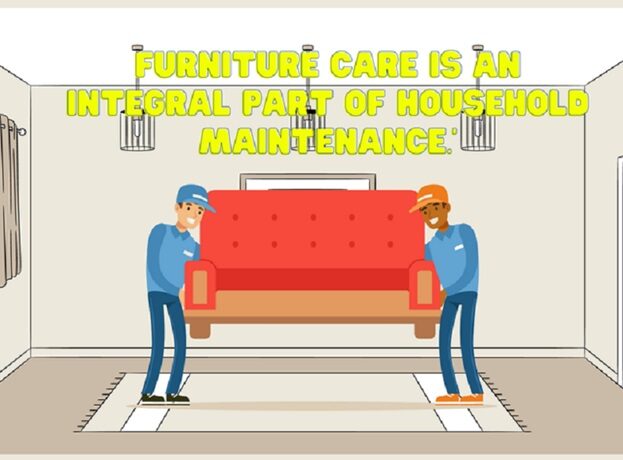Every day, we use contemporary furniture in Singapore. Some are functional, like a dining chair, while others are for aesthetics, like an antique sculpture or carving. Sometimes, specific pieces of furniture have emotional or symbolic value as mementoes, like a family chest.
This article is about caring for and preventing damage to high end furniture in Singapore as well as wooden objects, not restoring or repairing them. It is well within the abilities of nearly all caretakers of valuable wooden objects to understand and deal with the causes of damage. This guide explains how to prevent furniture damage.
Environmental elements
In this case, “environment” is where your furniture lives. When it comes to contemporary furniture in Singapore, the caretaker’s priorities and resources play a big role in what kind of environment is best for it. There is never a “perfect” environment for anything. There are only conditions that help or hurt the artefact more or less. As with most materials, there is a “perfect” environment that works best for each one. Optimal conditions for luxury furniture and wooden artefacts in Singapore are about 40o Fahrenheit with about 50% relative humidity. It is also dark, anaerobic (no oxygen), and free from contact with anything else; this is called “the ideal environment” (or anyone).
Even if it’s technically and financially possible to keep furniture in a chamber under these conditions, it’s hard to use. So we must at least try to understand how light, temperature, and humidity change, as well as the risk of damage from use, to make the best choices for how we want to use or keep contemporary furniture in Singapore.
Too much light exposure
Furniture light damage is one of the easiest environmental issues to understand and fix. Our eyes can detect a phenomenon called “electromagnetic radiation” that we call “light.” So because our eyes are so sensitive to it.
Light is an energy source. The energy of a light source interacts with everything it illuminates, including furniture surfaces. The intensity and colour of the damage will determine the amount of damage, so pay attention. Blue light is more dangerous than red light.
Light damage often appears as a colour change, like bleaching, but not always. Light bleaches and deteriorates most furniture parts, including the wood, coatings, and fabrics. Light damage is usually cumulative and long-lasting.
When not in use, leave the designer furniture from Singapore in the dark. This is also a quick fix for minor damage. Window shades, curtains, and screens can help protect furniture even when it’s in use. These devices help shield furniture from direct sunlight and bright lights. If the colour of the lights is an issue, ultraviolet filter films can be used. For example, fluorescent bulbs or solar UV radiation. Use opaque dust covers for a long time.
Remember that light can damage furniture surfaces. The longer and brighter the light, the more damage it does. But small steps can help mitigate the damage.
The humidity levels
Too high or too low changes in relative humidity can wreak havoc on Scandinavian furniture in Singapore. As the relative humidity fluctuates, wood absorbs and excretes water, causing it to expand and contract. To make matters worse, it changes size according to the direction of the grain. As long as the wood is available, this trait will remain constant. Even if the wood has been around for a long time, it doesn’t matter.
Wooden objects are constantly squeezing and squeezing each other as the humidity in the air changes. Some furniture parts may no longer fit together or break due to internal stresses brought on by this stress.
Wooden contemporary furniture from Singapore isn’t the only thing that gets wet when the weather changes. Coatings become more rigid as they age and degrade. Humidity changes eventually cause the coatings to break or separate from the wood because the wood keeps moving and the coating becomes more brittle over time. Paintings and gildings that aren’t going to be very flexible from the start, such as gesso, can make this problem even worse because they are often applied over a rigid ground.
Temperature and humidity go hand-in-hand, so keep this in mind. With today’s heating systems, a home’s interior relative humidity (RH) can be reduced, which can lead to furniture breakdown. You can reduce their impact by lowering the relative humidity (RH) in furniture-filled rooms during the winter. A humidistat is a device that regulates the temperature to maintain a constant percentage of humidity in the air.
Insect infestation
It can take a lot of time for bugs to ruin a lot of designer furniture from Singapore. Termites, carpenter bees and ants, powder post beetle larvae, and other insects can eat holes in wood that go below the surface. This can cause a lot of damage.
It takes the larvae a long time to tunnel through the wood until they are ready to emerge through exit holes at the right time in their life cycle. Bugs leave through these holes, and they often push wood that has been chewed and broken down. Important things to keep an eye on the sides of exit holes that have recently been cut have a new-wood look to them.
Rodent infestation
Rodents don’t usually eat wood for its own sake. Instead, they gnaw through it to get to the food on the other side of the wood. People should not store food, even condiments, in wooden luxury furniture from Singapore. This is the best way to avoid rodent damage. Because food also draws insects, it is best to keep food away from your collection as far away from it as you can.
Having rodents in a piece of furniture is a sign of problems with the building envelope. This must be sealed to keep rodents out.
Investing in luxury furniture in Singapore is for everyone. Visit Xtra Design to explore their beautiful interior curations and purchase one for your home.












